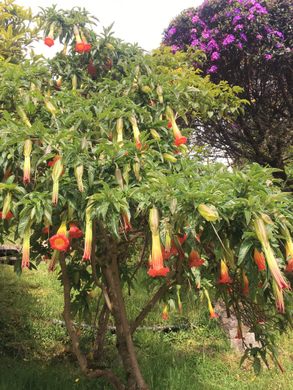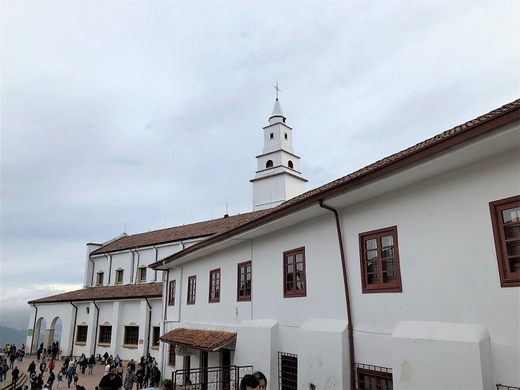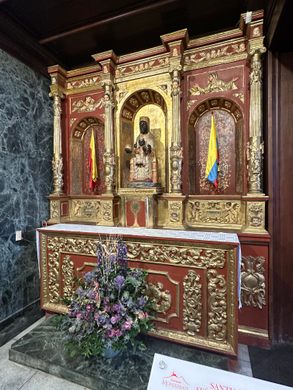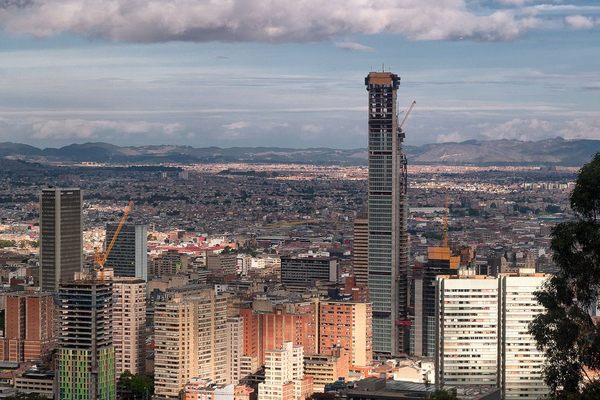Monserrate Sanctuary
Pilgrims each carried a brick to the top of Mount Monserrate to help build this historic sanctuary in Colombia.
The mountaintop Sanctuary of Monserrate is a religious building visible from much of Bogota. For the people of the Colombian capital, few structures are more adored or more emblematic of the city.
The history of the Sanctuary of Monserrate dates back to 1640 when permission was granted to build a hermitage atop the mountain. The small chapel was dedicated to the Virgen Morena de Monserrate, in homage to a similar sanctuary, which still stands today in the mountains outside Barcelona.
This, however, wasn’t the mountain’s first encounter with religiosity. In typical colonial fashion, the mountaintop was chosen in large part due to its existing spiritual significance among the indigenous population. For many centuries before the arrival of Catholicism, the summit of Mount Monserrate, which rises to 10,341 feet (3,152 m) above sea level, was venerated by indigenous peoples of the region, most significantly the Muisca, who called the mountain quijicha caca, meaning “grandmother’s foot.”
Once Catholicism had claimed the site, it wasn’t long before the sanctuary began to expand, and in the following decades, a monastery was added. Then, a local master craftsman named Don Pedro de Lugo y Albarracín made a statue for the chapel, which he called Santo Cristo caído a los azotes y clavado en la Cruz (“Holy Christ fell to the whip and nailed to the Cross”). Made from wood and metal, it has since become one of the most important religious statues in Colombia.
In times of crisis—be it a drought or failed harvest or earthquake—the effigy of the fallen Christ is carried down to the city, followed by a massive crowd of praying devotees. Many pilgrims now make their way up to the sanctuary specifically to visit the shrine of El Señor Caido.
The sanctuary itself has survived a number of earthquakes over the centuries, quakes that destroyed other religious buildings in the area. In 1917, an earthquake did cause extensive damage to the Montserrat sanctuary, at which point a new church was built. Completed in 1925, this new church built in the neo-Gothic style was constructed with the help of many pilgrims who flocked to the sanctuary on foot, each carrying at least one brick up the mountain to aid in the sanctuary’s re-construction.
Know Before You Go
There are now three ways to visit the Sanctuary of Monserrate. The traditional way— and that favored by pilgrims—is via a 1.5-mile walk along a trail up the side of the mountain from the city. The path is open from 5 a.m. to 1 p.m. daily.
Alternatively, you can take the funicular railway, built in 1929, or the teleférico (cable car) that began operating in 1955. Daily masses are held at the sanctuary from 8 a.m. to 10 a.m. and midday to 2 p.m.
The lines can get very long (two-hour plus waits), especially on holidays. The regular price for a ride up and down is 27,000 pesos. However, you can buy a Fast Pass for 73,500 and skip the lines. The Fast Pass is valid on both the funicular and the teleferico.
Community Contributors
Added by
Plan Your Trip
The Atlas Obscura Podcast is Back!






















































Follow us on Twitter to get the latest on the world's hidden wonders.
Like us on Facebook to get the latest on the world's hidden wonders.
Follow us on Twitter Like us on Facebook